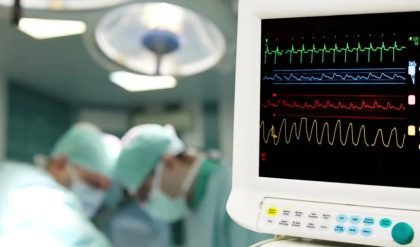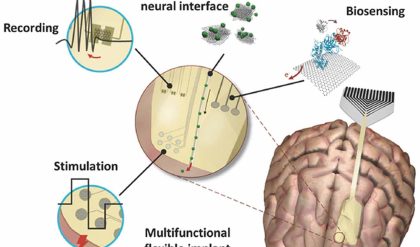
Overview
AlamarBlue is a fast assay that can measure cell viability. It is based on resazurin, a compound that upon entering living cells is reduced to resorufin. This reaction is accompanied by a color change of reagents – from blue for resazurin to red and fluorescent resorufin. Their levels can be then measured with absorbance or fluorescence intensity using a plate reader. This assay can provide information about cell culture viability and proliferation, for example in a context of encapsulating cells in a bioink or testing toxicity of a drug in a culture.
Materials
· AlamarBlue HS (ThermoFisher)
· Plate reader with one of the following filters: 540, 570, 600, 630nm
· Cell culture media
· Optical 96-well plate for plate reader
- Cell incubator
Methods: AlamarBlue Assay
- Prepare your 3D cell culture that will be subjected to AlamarBlue assay (this assay should work with any hydrogel and encapsulation technique).
- Warm-up cell culture media to 37°C.
- Prepare the working solution of AlamarBlue by diluting it with warm cell culture media 1:10.
- Replace cell culture media with working solution of AlamarBlue from the previous step. Incubate in cell incubator at 37°C for 1-4 hours. Optimization of the incubation time might be needed. For details, please refer to manufacturers guidelines.
- After incubation, collect media with AlamarBlue from each tested well and pipette 100 μl/well to an optical 96-well plate for plate reader measurement. For better results create 5 technical replicates from each tested condition.
- Replace the media in your cell culture. Cells can continue to grow and be subjected to AlamarBlue assay at a later time point.
- Measure absorbance or fluorescence using a plate reader.
Cell viability measurement using absorbance
- Measure absorbance of the samples collected in the previous steps at wavelengths of 570 nm and 600 nm using a plate reader. As a blank use a media only sample.
- Calculate the percent difference in reduction between your samples. This may be for example applied to samples exposed to different treatments (drug vs control) or different time points of a standard culture (24h vs 72h vs 7 days etc.). For this, use the following equation:
[(O2 x A1) – (O1 x A2)]/[(O2 x P1) – (O1 x P2)]x100
Where:
O1 = molar extinction coefficient (E) of oxidized alamarBlue (blue) at 570 nm = 80586
O2 = E of oxidized alamarBlue at 600 nm = A1 = absorbance of test wells at 570 nm
A2 = absorbance of test wells at 600 nm = 117216
P1 = absorbance of positive growth control well (cells plus alamarBlue but no test agent or first tested timepoint) at 570 nm
P2 = absorbance of positive growth control well (cells plus alamarBlue but no test agent first tested timepoint) at 600 nm
The resulting value in percent indicates the difference between the analyzed sample and the control in the amount of reduced AlamarBlue. If your result is below 100% it means that your tested condition (or timepoint) has viability inhibition. For example, if your result is 70% it indicates that the tested sample has 30% viability inhibition comparing to the control. In the case of testing 3D cell culture performance over time, you might see results above 100%, showing that cells are proliferating and showing higher metabolism than your initial timepoint.
Cell viability measurement using fluorescence
- Measure fluorescence of the samples collected in the previous steps at excitation 560 nm and emission 590 nm using a plate reader. As a blank use a media only sample.
- Calculate the percent difference in reduction between your samples. This may be for example applied to samples exposed to different treatments (drug vs control) or different time points of a standard culture (24h vs 72h vs 7 days etc.). For this, use the following equation:
FI 590 of test sample/FI 590 of control sample x 100
Where FI 590 = Fluorescence Intensity at 590 nm emission (560 excitation).
Using this method results can be interpreted in the same way as from the absorbance method.
Warnings
It is not advised to use 2D culture as a control for this assay to compare to 3D cell culture due to different absorption rates in 3D conditions.


